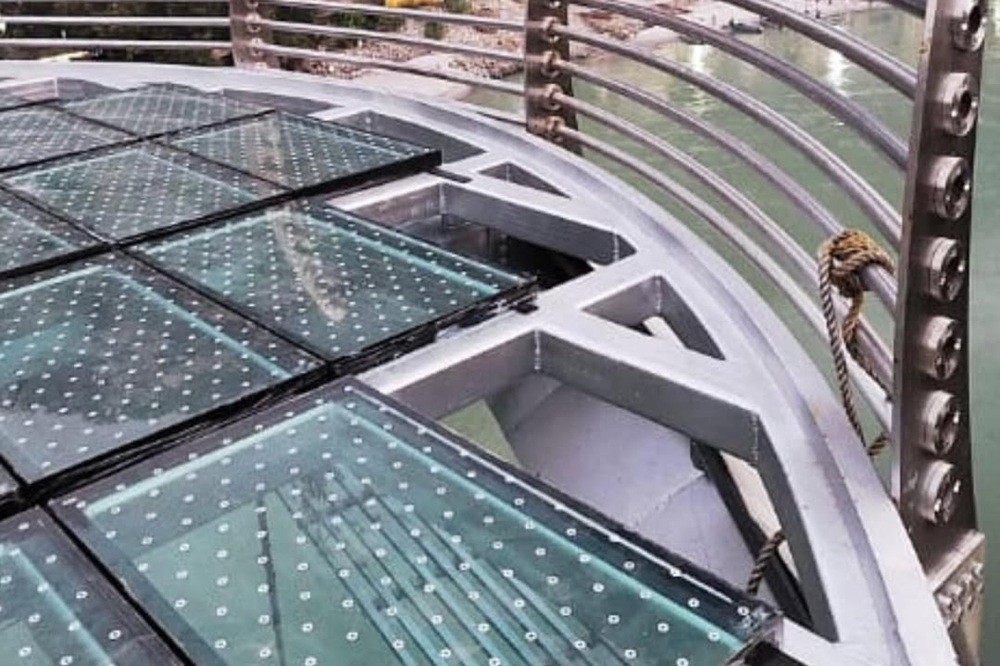Hanuman Setu (Bajrang Setu): New Glass Bridge in Rishikesh
Rishikesh, the “Yoga Capital of the World,” has always been defined by the majestic Ganga River and its iconic suspension bridges: Ram Jhula and the historic, century-old Laxman Jhula. However, a new era of connectivity and attraction is dawning on the banks of the sacred river.
The much-anticipated replacement for the closed Laxman Jhula—often referred to by locals as Hanuman Setu or the official Bajrang Setu—is set to become Uttarakhand’s first and India’s most unique glass suspension bridge over a river. This guide covers everything you need to know about Rishikesh’s most exciting new landmark.
The Bridge Reborn: From Laxman Jhula to Bajrang Setu
The original Laxman Jhula, built in 1929, served as a vital link between Tapovan and Jonk for nearly 90 years. Due to structural concerns and safety issues, this beloved landmark was permanently closed to traffic in 2019. The closure left a significant gap, both practically and sentimentally.
To maintain the spiritual and physical connection, the government conceptualized and began construction on a modern, safer alternative.
Why the Name Confusion? Hanuman Setu vs. Bajrang Setu
The local community and pilgrims often refer to the new structure as Hanuman Setu due to its proximity to the original mythological site associated with the Ramayana (Lord Ram, Laxman, and their devotee Hanuman). However, the official Public Works Department (PWD) name for this ₹60 crore project is the Bajrang Setu (Bajrang being another name for Hanuman).
Regardless of the name you use, they both refer to the same groundbreaking, architecturally stunning glass bridge replacing the old Jhula.
A Marvel of Modern Engineering: The Bajrang Setu Features
The Rishikesh Glass Bridge is not just a replacement; it’s a monumental upgrade designed to be a tourist attraction in its own right, blending modern thrill with ancient spirituality.
| Feature | Specification | Significance |
|---|---|---|
| Length | 132.3 meters (approx. 434 feet) | Similar to the historic length of the older bridges. |
| Width | 8 meters (approx. 26 feet) | Significantly wider than its predecessor for higher traffic. |
| Design | Three-lane structure | Central lane for two-wheelers; two dedicated side lanes for pedestrians. |
| Pedestrian Walkways | 1.5-meter-wide glass footpaths on both sides. | Made of ultra-thick, multi-layered toughened safety glass (up to 66 mm). |
| Architecture | Towers inspired by the Kedarnath Temple design. | Integrates spiritual iconography into the structural design. |
The Thrill of the Glass Walkway
The most exciting feature for visitors will undoubtedly be the transparent glass footpath. As you walk across the Bajrang Setu, you will be standing 57 meters (187 feet) above the sacred Ganga River. This feature offers a spectacular, unobstructed, and thrilling view of the flowing holy water, the surrounding Shivalik hills, and the rafters below.
Engineers have focused heavily on safety, using earthquake-resistant materials and robust steel cabling, ensuring the structure can easily handle the year-round flow of pilgrims and tourists.
Bajrang Setu’s Expected Opening Timeline
The construction of the Bajrang Setu is in its final stages, with the steel deck joining and tower work largely complete. As of late 2025, officials have stated that the bridge is nearing 90% completion, with only the installation of the specialized glass panels remaining. The bridge is expected to be fully completed by December 2025 and opened to the public in early 2026.
How to Reach Hanuman Setu (Bajrang Setu)
The new glass bridge occupies the historically significant location adjacent to the old Laxman Jhula, connecting the two major hubs of Rishikesh:
- Location: Tapovan (Tehri side) to Jonk (Pauri Garhwal side), near the original Laxman Jhula site.
- From Rishikesh City Center (Triveni Ghat): Approximately 12 km, taking 15-20 minutes by auto-rickshaw or taxi.
- Nearest Major Hub: It is a short walk from the popular Tapovan area, which is filled with cafes, shops, and ashrams.
Must-See Attractions Near the Rishikesh Glass Bridge
Visiting the Bajrang Setu allows easy access to many of Rishikesh’s best spots, making it a perfect hub for a full day of exploration:
- Tera Manzil Temple (Trayambakeshwar Temple): Located right near the original Laxman Jhula, this 13-story shrine offers panoramic views of the city and the Ganga.
- Lakshman Jhula Market: Even with the old bridge closed, the bustling market remains open, offering spiritual items, handicrafts, and souvenirs.
- Cafes with a View: The Tapovan side is famous for its riverside cafes like Little Buddha Cafe, where you can relax and enjoy the sight of the Ganga and the new structure.
- Beatles Ashram (Chaurasi Kutia): A short drive or trek away, offering a historical and artistic look into the city’s spiritual past.
The New Landmark of Devbhoomi Uttarakhand
The Hanuman Setu (Bajrang Setu) is more than just a means to cross the river; it is a symbol of progress, blending deep spiritual heritage with forward-looking architecture. It replaces a century-old icon with a world-class attraction, ensuring safety and handling the high footfall of modern tourism while preserving the spiritual energy of the sacred land.
It is poised to become the new visual identity of Rishikesh, appealing equally to the adventure enthusiast seeking the thrill of a glass walk and the spiritual seeker looking for a moment of quiet reflection above the holy Ganga.
Plan your trip for late 2025 or early 2026 to be among the first to walk across India’s most impressive new suspension bridge! Hanuman Setu Hanuman Setu Hanuman Setu Hanuman Setu

